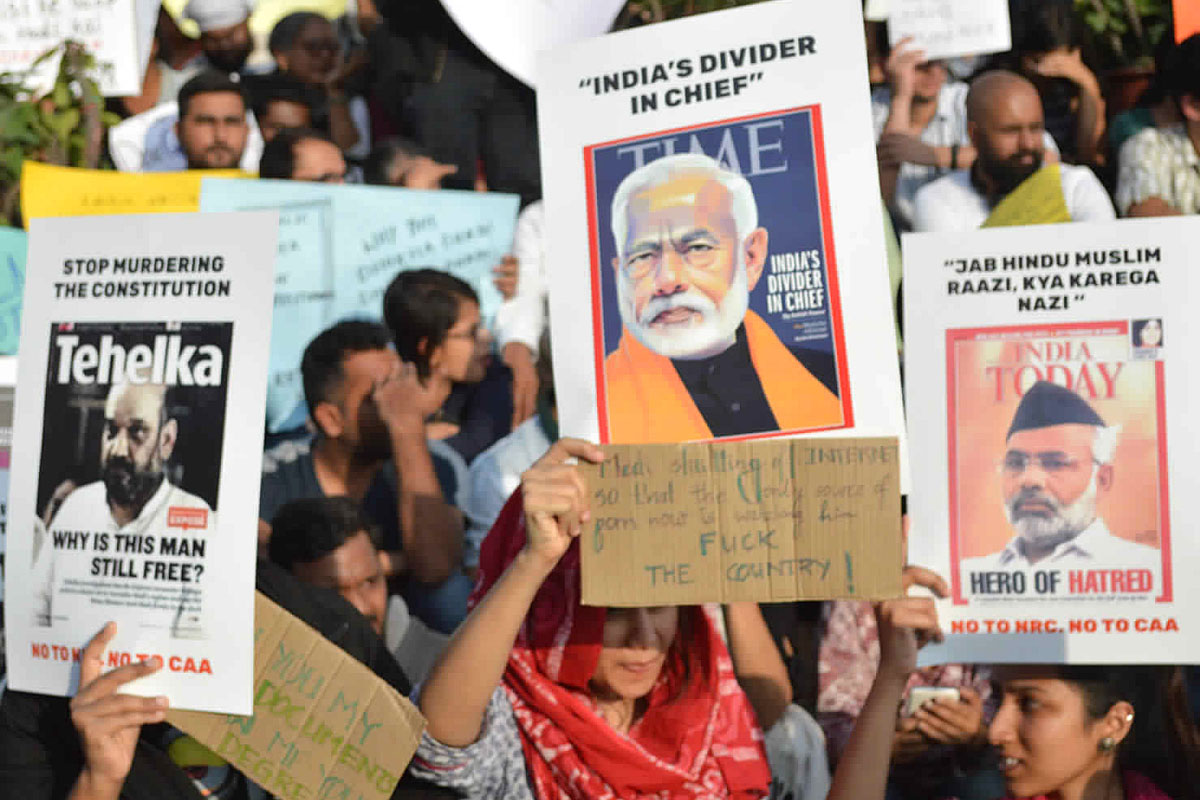Silencing resistance movements through the imposition of Section 144 in parts of India is an abuse of power. It is also the state’s display of ignorance of the sublimity of silence. Silence is not the lack of sound, but its antithesis. Who better to trust for a reflection on silence than one of the greatest composers who mastered both silence and sound? When John Cage visited a soundless chamber, he wondered about two sounds that he heard: “The high one was your nervous system in operation. The low one was your blood in circulation.”
Today, like the musician, the people of India distinctly hear sounds of the nervousness of their leaders, and of a fight for spirited change. Is it not stateimposed silence that makes such a sound loud and clear? For the state, silencing its people is the best response. Let us for a moment invoke the consciousness of the musician who turned even the “zen” of silence into something political. Cage’s composition 4’33” is called “the silent piece”. It is also a piece of deep frustration – the kind that protestors face in light of Sec 144 orders, which mutes their voices.
Advertisement
It is precisely because there is no musical note that’s associated with instruments or vocals, that the sounds of the surroundings are elevated. Today’s silence presupposes the act of silencing. Yet, one need not rule out the possibility of salvaging from this silence something of the kind Cage did with 4’33”. This is abundantly clear from the visuals coming from the Town Hall in Bengaluru, or those from Delhi, Hyderabad, Ahmedabad, and other parts of India. The state detained public intellectuals, beat up students, intimidated critics, and thus assumed it had successfully silenced its people.
But it is this silence that clarifies the onset of a failing state that Hannah Arendt once characterized by its temptation to deprive “all citizens of legal status and rule them with an omnipotent police”. Hence, the state’s action to silence people cannot foreclose resistance today or in the future, rather, counter to its whims, the silencing has only made the need for resistance stronger. The state’s silencing is older than the Sec 144 orders for when was the last time we raised our voices without fear? Aside from the state-sanctioned lynching, murders, mobs, encounter killings, etc., the fear is manifest through laws such as the Sedition Act and the Unlawful Activities Prevention Act (UAPA).
The voices from the erstwhile state of Jammu and Kashmir have been silenced for months after the revocation of Article 370. At the time of this writing, a similar communication blockade is in effect in the capital, as well as other parts of India. Silencing this time has descended suddenly, too visibly. But have we not also taken notice of a silencing of a different kind – marginalising, in our history textbooks, the voices of minorities? And what about that silencing when parents admonish their children to remain calm and go about business as usual? My hometown, Bengaluru, convulsed with huge protest on 15 December. A crowd of more than five thousand people gathered at the Town Hall.
We sang, sloganeered, listened to speakers representing many diverse groups. The drumbeats covered everything: our frustrations with government’s divisive policies and its disregard for the Constitution, the call for a change, unity, etc. On 19 December, when a protest was to take place in solidarity with the nation-wide movement, the people of the city were served the Sec 144 orders. The Town Hall was blocked from legitimate voices of hope and change. The courageous protestors who turned up were silenced by bussing them over to jails. Yet, like Jean Paul Sartre observed of the 1968 student uprising in France against the excesses of President Charles de Gaulle, we hope to discover that the “field of the possible” has been enlarged in Bengaluru, as in the rest of the country.
In these times, one must of course eulogize the power of silence. One must think of the greatness of Henry David Thoreau, of Buckminster Fuller who only through seeking silence paved way to improve the human condition, through art and science. One must read and reinterpret Susan Sontag’s “The Aesthetics of Silence” wherein she forcefully describes silence as a “stubbornness stepped up to the nth degree”, as that which “keeps things ‘open’”, and as that which provides “time for the continuing or exploring of thought”.
One must birth a poem – like the one John Keats wrote upon contemplating a Grecian Urn, the “foster child of silence” – a poem of “beauty”, of “truth”, of resistance. After all, the practice of the aesthetics of silence is for the reach of common people as much as it is for the modern artists Sontag writes of. As PILs are filed against these orders, people are preparing for a speech that waits beyond silence. Such a speech will necessarily be informed by their fundamental rights and constitutional demands.
(The writer is a public policy graduate student at the National University of Singapore)











